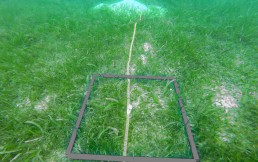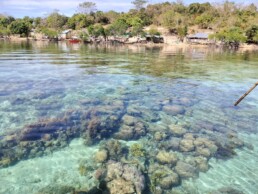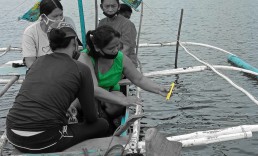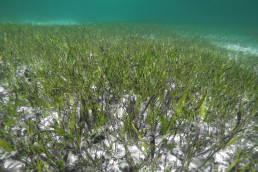Blue Carbon
Seagrass and Mangrove Research and Conservation
The importance of mangroves and seagrass ecosystems.
In the past, conservation efforts placed heavy emphasis on coral reef ecosystems. It is only recently that the fundamental significance of mangrove forests, tidal wetlands, and seagrass beds has been recognized as blue carbon sinks. Science has discovered that these underappreciated ecosystems can store more carbon for a longer period (up to thousands of years), and at a far quicker rate than terrestrial forests.
C3 has long been involved in seagrass and mangrove research and conservation. We regularly contribute to national and global knowledge about these critical systems. A large part of the organisation’s work involves mapping these ecosystems, documenting threats, and establishing community monitoring programmes as well as campaigning for their inclusion in new and existing MPAs.
Our baseline assessment revealed that our area coverage is rich in 31 mangrove species and 24 beach forest species.
In the areas we work, these ecosystems are critical.
Mangrove and seagrasses sustain coastal livelihoods, and provide nursery grounds, feeding areas, and shelter for hundreds of fish and invertebrate species. They also provide physical protection for vulnerable coastal communities from increasingly frequent and severe typhoons that result from the escalating impact of climate change.
To support mangrove and seagrass growth, fifteen mangrove and beach forest community nurseries were established in Coron and Busuanga. In these nurseries, nine mangrove species and four beach forest tree species were raised. This has successfully resulted in the planting of over 52,000 mangrove seedlings and 10,300 beach forest tree seedlings.
To further protect these ecosystems, eight community members were deputized as Coastal Forest Guards. C3 also developed IEC materials, consisting of a poster and brochure, to inform the community on coastal forest protection.
View our documentation
of the Busuanga Coastal Forest
Project Implementation here.
Another of C3’s achievements is the development of the Mangrove Forest Management Plan of Busuanga Island.
By the end of 2020, eight coastal Barangays of Busuanga and Coron have benefited from our Busuanga Coastal Forest Project. We reached over 2,000 people through our community education and public awareness program, and a total of 1,652.2 ha of Busuanga Coastal Forest have been rehabilitated and protected.

Related Case Studies
Contact C3 Philippines
Busuanga OfficeSalvacion, Busuanga, Palawan, 5317 Philippines
Taytay Field OfficePurok 6 San Lorenzo, PoblacionTaytay, Palawan, 5312 Philippines
C3 Philippines (C3PHILIPPINES INC.), in accordance with the Corporation Code of the Philippines, is registered as a non-profit organization in the Philippines under the Securities and Exchange Commission with Company Registration No. CN201115227.



